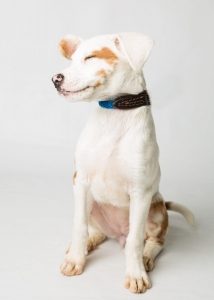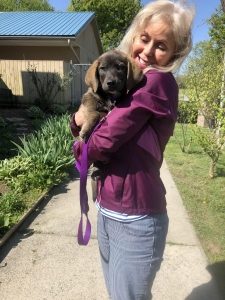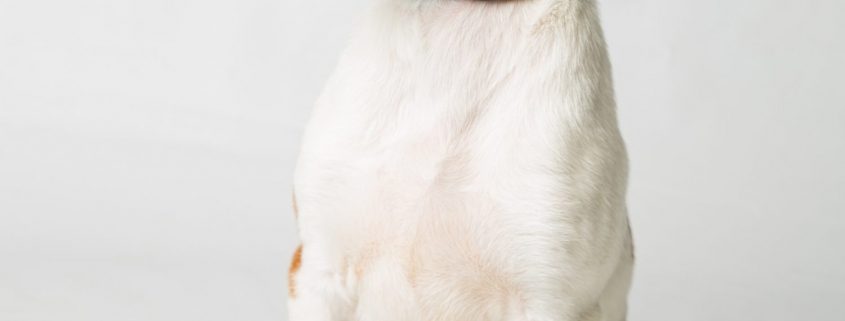Puppy Socialization: Pandemic Version, pt 1
Puppy Socialization During a Pandemic
 We find ourselves in unprecedented times for the foreseeable future. Unable to socialize in familiar ways, many are choosing canine companionship to find purpose and joy in our day. Adoptions are soaring all over the country. In many ways, it seems the ideal time to add a new member of the family. If you have recently welcomed a puppy into your home, you may have concerns about how to socialize your new family member during this period of social distancing. Luckily, there are a lot of ways to safely introduce your puppy to the world they will be living in.
We find ourselves in unprecedented times for the foreseeable future. Unable to socialize in familiar ways, many are choosing canine companionship to find purpose and joy in our day. Adoptions are soaring all over the country. In many ways, it seems the ideal time to add a new member of the family. If you have recently welcomed a puppy into your home, you may have concerns about how to socialize your new family member during this period of social distancing. Luckily, there are a lot of ways to safely introduce your puppy to the world they will be living in.
Socialization is a developmental stage that occurs where the puppy learns about how to communicate with other dogs, humans and how to live in its environment. Socialization during this time period can prevent inappropriate responses such as fear, over reactivity, shyness or aggressive reactions. Research shows the more pleasant experiences a puppy has had by twelve weeks the more confident he will be as an adult.
A critical period is a specific time in the maturation process when a small amount of experience will produce a great effect on later behavior. It is also a period of time where learning occurs with less effort and is more likely to be stored in long term memories.
The canine socialization period is between 21-49 days and this is the most critical period for a puppy to learn social skills from its parents and siblings
The canine socialization period is between 21-49 days and this is the most critical period for a puppy to learn social skills from its parents and siblings. The human socialization period is from 7-12 weeks. This is the period when puppies leave their littermates to live their new lives. This is when exposure to new people and environments should really begin in earnest. The window for socialization begins to close at 16 weeks, however dogs continue to learn for the rest of their lives.
There are also sub periods which are referred to as fear imprint periods. The first fear imprint period is 8-11 weeks. The puppy becomes very susceptible to long lasting effects of fear inducing stimuli. If a puppy has a very fearful reaction to something during this period, it could have affects for the rest of his life. The second fear period can occur anywhere from 5-14 months. It is impossible to say when your puppy will hit this period as it is an individual response. This is the fear of new situations period where your well socialized puppy may start to show apprehension or fear towards people or situations. This period usually lasts about 3 weeks.
Successful socialization is not simply about crossing items off a list by exposing your puppy to them. It is about thoughtful exposure. The key to good socialization is that it should be a positive experience for the puppy. If it ends up as a negative experience for some reason, then we need to set up several more similar events but at a level which is pleasant for the dog to outweigh that one negative experience. For example, you want to socialize your dog to kids so you take him to a playground. A group of kids runs over and mobs the puppy who then tries to run away. That is a negative experience for that particular puppy. To outweigh that experience, you could take the puppy to watch one quiet child play in the yard while feeding the puppy treats. As your puppy gains confidence, add more children to the experience.
The key to good socialization is that it should be a positive experience for the puppy.

Understanding dog body language is important to being able to read your puppy’s comfort levels. Spend some time watching videos on body language. Many people only recognize that a dog is afraid when he has his tail tucked and is trying to run away. There are usually a lot of subtle signals that come before those flight or fight responses. Some examples are: the puppy is turning his head away, yawning, lip licking, suddenly sniffing or licking himself. We have to look at the whole picture of body language to determine the dog’s comfort level as these signals do not occur in a vacuum. Stress signals usually appear in succession.
We never want to force the puppy to interact with something that is scaring him. That will only make things worse. Instead, keep the puppy at a point where his body looks relaxed, he will still play with toys and eat food. Checking to see if a dog will play is a good litmus test to see how the dog is feeling about something. You can try gently encouraging the puppy with a happy tone of voice and treats. The goal is for the puppy to willingly engage with the object or person of their own accord and be allowed to disengage when they want to.
Proper socialization is vital for development into a well-behaved adolescent and adult dog. Socialization doesn’t always just refer to how a dog interacts with people or other dogs but may include their responses to other stimuli experienced during the phases of development. In part 2 we’ll discuss how to work on socialization for your puppy!







